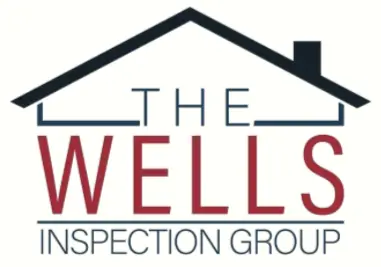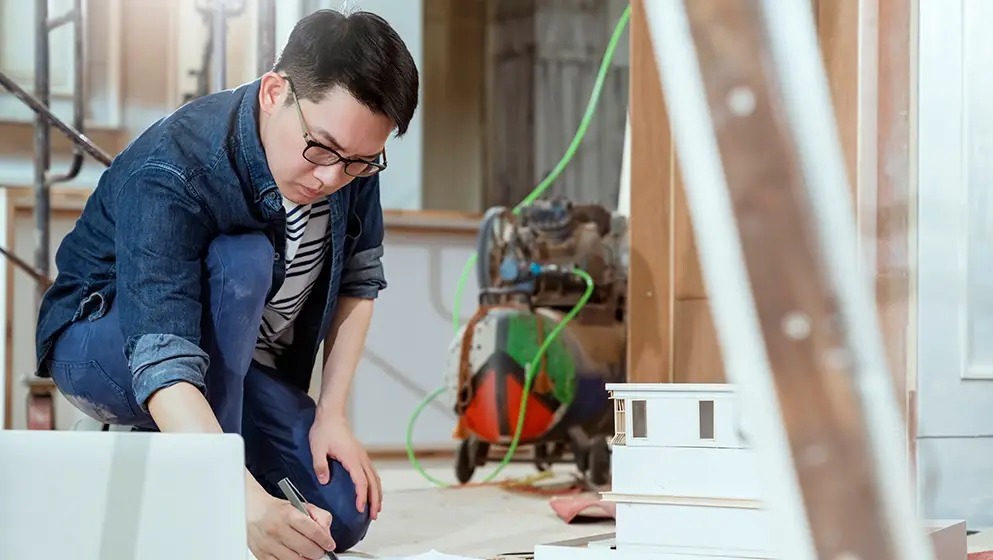The process of purchasing a home involves numerous considerations, one of which is a thorough home inspection. A home inspection serves as a vital step in the home buying process, as it allows potential buyers to assess the condition of the property and identify any potential issues or concerns. This article aims to provide buyers with a comprehensive understanding of the questions they should ask during a home inspection. By following a systematic approach, buyers can gather essential information about the structural integrity, electrical and plumbing systems, HVAC system, pest and mold infestations, and safety features of the property. This knowledge empowers buyers to make informed decisions and negotiate effectively with sellers. Adopting an objective and impersonal tone, this article presents a detailed examination of the key questions every buyer should ask during a home inspection.
Structural Integrity
The structural integrity of a property can be assessed by inspecting the foundation, walls, floors, and roof to ensure they are free from cracks, settling, water damage, or any other signs of structural damage. Foundation stability is a crucial aspect to consider during a home inspection. Any visible cracks, uneven settling, or signs of water intrusion in the foundation should be thoroughly examined. It is important to ensure that the foundation is stable and does not pose any risk of structural failure in the future.
Another key component of the structural integrity is the condition of the roof. The roof is the first line of defense against the elements, so it is vital to inspect it for any signs of damage or deterioration. This includes inspecting the shingles or tiles for cracks, missing pieces, or curling edges. Additionally, the condition of the roof flashing, gutters, and downspouts should be evaluated to ensure proper water drainage.
During the home inspection, the structural integrity of the property should be given meticulous attention. It is essential to hire a professional inspector who can identify any potential issues and provide an accurate assessment. Addressing any structural problems early on can save buyers from expensive repairs or even safety hazards in the future.
Moving on to the next section about electrical and plumbing systems, it is important to assess the functionality and safety of these essential components of a home.
Electrical and Plumbing Systems
When conducting a home inspection, it is crucial to inquire about the age and condition of the electrical wiring. This will help determine if any potential risks or safety hazards exist and if the electrical system is up to code. Additionally, it is important to ask about the functionality of the plumbing system and any potential issues such as leaks, clogs, or outdated fixtures. Understanding the condition and functionality of these systems is essential for making an informed decision as a buyer.
Ask about the age and condition of the electrical wiring
One important aspect to consider during a home inspection is the age and condition of the electrical wiring, as this can provide valuable insight into the safety and functionality of the property. It is crucial to inquire about the age of the electrical wiring to determine if it meets current electrical safety precautions. Outdated wiring alternatives, such as knob-and-tube or aluminum wiring, may pose potential safety hazards and could require costly updates or replacements. Additionally, the condition of the electrical wiring should be assessed to identify any signs of wear and tear, such as frayed wires or loose connections, which could increase the risk of electrical fires or malfunctioning appliances. By gathering this information, buyers can make informed decisions about the property’s electrical infrastructure and potentially negotiate repairs or upgrades as necessary. Moving on to the next section, it is also important to inquire about the functionality of the plumbing system and any potential issues.
Inquire about the functionality of the plumbing system and any potential issues
Inquiring about the functionality of the plumbing system and identifying any potential issues is a crucial step in assessing the overall condition and livability of the property. A well-maintained plumbing system ensures the proper functioning of water supply and drainage throughout the house. During the inspection, it is important to inquire about the maintenance history of the plumbing system, including any repairs or replacements that have been done. Additionally, it is essential to ask about any water pressure problems that may exist, as low water pressure can indicate underlying issues such as leaks or blockages in the pipes. Identifying these potential problems beforehand can save the buyer from expensive repairs in the future. Transitioning to the subsequent section about the HVAC system, it is equally important to assess its condition and functionality to ensure a comfortable living environment.
HVAC System
When conducting a home inspection, it is crucial to inquire about the age and maintenance history of the HVAC system. This information can provide insight into its overall condition and potential need for repairs or replacements. Additionally, it is advisable to inquire about the system’s efficiency to determine if it meets energy-saving standards and if any improvements are necessary.
Ask about the age and maintenance history of the heating, ventilation, and air conditioning system
Exploring the age and maintenance history of the heating, ventilation, and air conditioning system is crucial during a home inspection.
To ensure a comprehensive evaluation of the HVAC system, it is essential to inquire about its age and maintenance history. Obtaining maintenance records allows potential buyers to gain insight into the system’s past upkeep and identify any potential issues. Moreover, knowing the age of the HVAC system provides an indication of its remaining lifespan and potential need for repairs or replacements. An older system may be more prone to breakdowns and inefficiencies, requiring costly repairs or complete replacements. Additionally, understanding the system’s energy efficiency is vital as it impacts monthly utility costs. By considering the age, maintenance history, and energy efficiency of the HVAC system, buyers can assess its overall condition and potential need for future investments. Transitioning into the subsequent section, it is also important to inquire about the efficiency and potential need for repairs or replacements.
Inquire about the efficiency and potential need for repairs or replacements
It is important to assess the efficiency and potential need for repairs or replacements of the HVAC system to ensure its optimal functioning and longevity. The efficiency assessment of the heating, ventilation, and air conditioning system provides valuable insight into its performance and energy consumption. The inspector should evaluate the system’s overall efficiency by examining its age, condition, and maintenance history. They may also use specialized equipment to measure its airflow and temperature differentials. Based on this assessment, the inspector can provide repair recommendations to address any issues or potential problems that may affect the system’s efficiency. This could involve replacing worn-out or outdated components, cleaning or replacing air filters, or adjusting the system’s settings. By addressing these issues, homeowners can improve the efficiency of their HVAC system and potentially reduce energy costs. Furthermore, repairs or replacements may be necessary to ensure the longevity of the system and prevent major breakdowns or malfunctions.
Transition: Moving on to the next section, it is also important to inquire about the presence of pest and mold infestations in the property.
Pest and Mold Infestations
Pest and mold infestations can be identified during a home inspection by examining the presence of wood damage, droppings, or visible signs of moisture and mold growth on walls, ceilings, or other surfaces. Mold prevention and pest control solutions are essential considerations for any homeowner, as these infestations can cause significant damage to the structure of the property and pose health risks to the occupants.
During a home inspection, it is crucial to assess the extent of any existing pest or mold infestations. Wood damage, such as chewed or hollowed-out areas, can indicate the presence of termites or other wood-destroying insects. Droppings and other evidence of pest activity can provide further confirmation of an infestation. In addition, visible signs of moisture and mold growth should be thoroughly examined, as they can indicate underlying issues with plumbing, roof leaks, or poor ventilation.
To prevent mold growth and pest infestations, it is important to address any moisture-related issues in the home. This may involve repairing leaks, improving ventilation, or installing dehumidifiers in areas prone to high humidity. Additionally, regular inspections and maintenance can help detect and address any potential problems before they become major issues.
Understanding the presence of pest and mold infestations is crucial for buyers during a home inspection. By identifying these issues, buyers can negotiate repairs or replacements with the seller and plan for any necessary remediation measures. Moving forward, it is important to consider other aspects of the property, such as safety features, to ensure a comprehensive assessment of the home’s condition.
Safety Features
Safety features play a crucial role in ensuring the overall well-being of occupants and should be carefully assessed during a home inspection. Fire alarms and carbon monoxide detectors are two key safety features that potential buyers should pay close attention to when evaluating a property.
Fire alarms are essential in alerting individuals to the presence of a fire and giving them the opportunity to evacuate quickly. During a home inspection, it is important to ensure that fire alarms are present in appropriate locations throughout the property. This includes bedrooms, hallways, and common areas. Additionally, it is vital to check that the fire alarms are functioning properly by testing them. The presence of fire alarms not only provides peace of mind but can also significantly reduce the risk of injury or even death in the event of a fire.
Carbon monoxide detectors are equally important as they can detect the presence of this odorless, colorless gas. Carbon monoxide is produced by the incomplete combustion of fuels such as gas, oil, or wood, and can be deadly if not detected early. During a home inspection, it is crucial to ensure that carbon monoxide detectors are present in areas where fuel-burning appliances are located, such as the kitchen or near the furnace. These detectors should be tested to ensure they are in good working condition.
In conclusion, safety features such as fire alarms and carbon monoxide detectors are critical components of a home inspection. Buyers should thoroughly assess the presence and functionality of these features to ensure the safety and well-being of themselves and their future occupants.
Conclusion
In conclusion, conducting a thorough home inspection is crucial for every buyer. By asking the right questions and addressing potential issues, such as structural integrity, electrical and plumbing systems, HVAC systems, pest and mold infestations, and safety features, buyers can make informed decisions about their potential purchase. It is essential to prioritize the overall condition and functionality of the property, ensuring that it meets their expectations and provides a safe and comfortable living environment in the long run.





